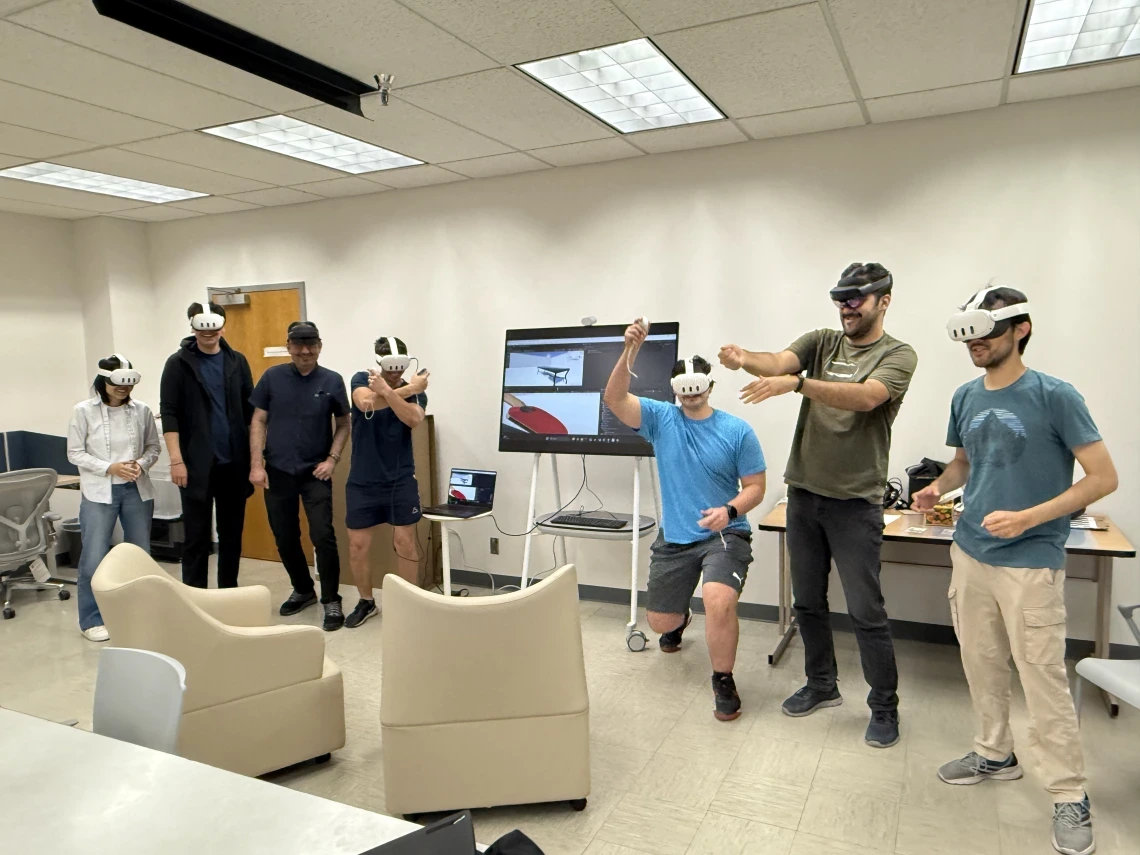Course blends AI and immersive tech in extended reality

Students practice XR applications for course projects.
At the University of Arizona, the convergence of artificial intelligence and extended reality (XR) is transforming how students learn, experiment, and innovate. One cornerstone of the university's XR education efforts is the course, Introduction to Extended Reality, taught by Ehsan Azimi, assistant professor of ECE and computer science.
With more than 14 years of experience in XR, Azimi is helping shape the future of immersive technology by providing students from diverse disciplines with both a solid theoretical foundation and hands-on training in XR systems.
XR itself serves as an umbrella term encompassing various technologies: virtual reality (VR), which creates entirely immersive digital environments; augmented reality (AR), which overlays virtual elements onto the real world; and mixed reality (MR), which contextually integrates digital content with physical surroundings.
“This course is carefully structured to blend theoretical foundations with industry-level, hands-on problem-solving experiences," said Azimi, whose research bridges human-computer interaction, AI, and robotics. “Students don’t just learn about XR—they actively build and innovate with it.”
The course begins by introducing essential concepts such as spatial transformations, camera modeling, interaction modalities, user-centered design and perception. Students also explore advanced topics like digital twins—virtual replicas used for simulation and analysis—alongside voice and gesture input, eye gaze tracking, and immersive training systems that use virtual, augmented and mixed reality.
